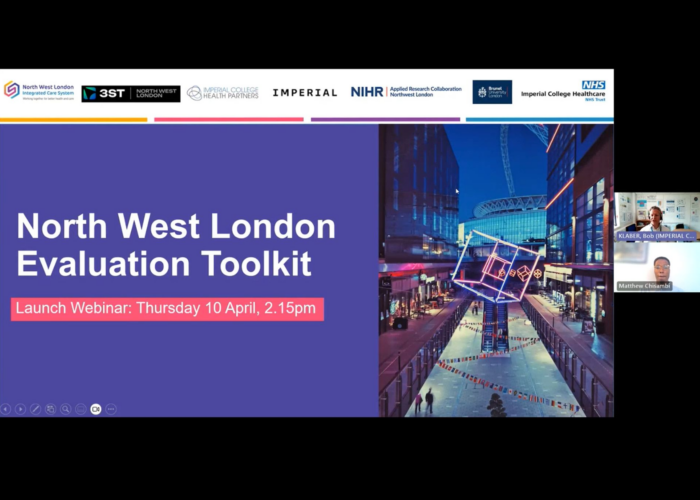 ICHP has been providing support to a number of primary care networks to turn the concept of population health management into a reality.
ICHP has been providing support to a number of primary care networks to turn the concept of population health management into a reality.
Population Health Management (PHM) as a concept has been around for a while, but it’s recently been boosted up the priority list by the NHS Long Term Plan. The plan advocates more integrated working and a population health management approach to improving the health and wellbeing of people across the country, with health, care and other organisations working together to identify their populations’ needs and develop new services to meet them.
We’ve been working with a number of emerging Integrated Care Systems (ICSs) that link health, social care and others such as the voluntary sector, supporting them to develop population health approaches in their area.
Within those ICSs, Primary Care Networks (PCNs) are increasingly being seen as the natural delivery units for population health management, as they try to devolve some of the decision-making down to the more local level of neighbourhoods covering around 50,000 people.
This means GPs are increasingly being asked to think more strategically and work in ways that require different skills sets – for example, looking at data in new ways, new kinds of leadership and developing an understanding of how they can share budgets for patients.
Here at ICHP we’re using a range of methods to support PCNs in this venture, depending on their individual needs.
A new tool for North West London
We are working with PCNs in North West London (NWL) on a new tool that can segment patient populations at a number of levels – practice, PCN, STP, ICS etc. It uses the linked data we have for NWL to follow anonymised patient groups through primary, community, acute and social care, giving us a much more holistic view of their patient pathway.
By looking at the different segments (such as healthy children, adults, or older people) across a targeted area such as a neighbourhood, those planning services can see, for example, which groups are driving high attendances at a practice or PCN level, or where they are doing well or not against their chosen performance indicators. This allows them to identify where the opportunities are for better care and potentially create bespoke packages of care for the different groups.
We’ve worked closely with PCN colleagues in Hammersmith and Fulham to co-design the tool and have presented on the idea to other PCNs across NWL for their feedback.
Because PCNs often don’t have the capacity to look at data in-house, we will make the tool available to networks across NWL and support them in working with it, so they can start making PHM a reality. The first version will be ready for roll-out across NWL by the spring.
While this isn’t designed to be a national tool – most areas don’t yet have the linked data that it uses – we hope that practices across the country will also be able to benefit. If we know what RightCare cluster a practice is in, we should be able to compare it with a practice that has a similar population, which may help inform the practice team of the key areas where they can make a start.
Tailored support for PCNs at different levels of maturity
We’re also working with PCNs across the country at varying levels of maturity and understanding of PHM.
For example, we’ve linked up with the Yorkshire and Humber Academic Health Science Network to support the West Yorkshire and Humber ICS to come up with a PHM programme, by working with PCNs to build the approach from the ground up.
Through meetings, workshops and lots of conversations with PCNs across the area, we’ve been getting a sense of what they really need, asking what their understanding of PHM is and whether they are confident that this is a shared understanding. This gives us a starting point to make sure everyone is confident about the concept and then move on to how they can start to make it a reality.
The key is to find out what the PCNs think would take them from talking about PHM to doing it. The support each PCN needs will differ depending on where it already is in this process – some have already carried out high level analytics but don’t know how to make the leap to redesigning pathways; others haven’t started looking at the data yet and want to know what they need to do this; some have chosen priority areas for service development and some haven’t.
We are now arranging workshops with some of the PCNs where we will supply relevant national data collated with their local data, to look at what we have and how they can use it to take their PHM programmes forward. This should lead to tangible actions and we hope that their plans will be ready by March.
A shared learning curve
It’s key in all of this work that we co-create tools, information and methods of working together with PCN and ICS representatives right from the beginning, rather than trying to pre-empt what they need. These new partnerships for planning and delivering health and care are still in their relative infancy and PHM approaches can and should be developed in tandem with the wider structure. Everyone is on a learning curve – including us – as these new system partners develop their own ways of working together and maximising the benefits of PHM in improving health and care.
By Henry Ireland, Innovation Manager.



